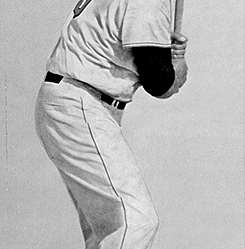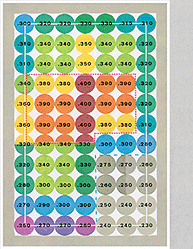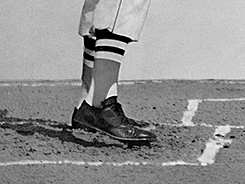
My
first rule of hitting was to get a good ball to hit. I learned down to
percentage points where those good balls were. The box shows my particular
preferences, from what I considered my “happy zone” - where I could hit
.400 or better - to the low outside corner - where the most I could hope
to bat was .230. Only when the situation demands it should a hitter go
for the low-percentage pitch.
Since some players are better high-ball hitters than
low-ball hitters, or better outside than in; each batter should work out
his own set of percentages. But more important, each should learn the
strike zone, because once pitchers find a batter is going to swing at
bad pitches he will get nothing else. The strike zone is approximately
seven balls wide (allowing for pitches on the corners). When a batter
starts swinging at pitches just two inches out of that zone (shaded area),
he has increased the pitcher’s target from approximately 4.2 square feet
to about 5.8 square feet - an increase of 37 percent. Allow a pitcher
that much of an advantage and you will be a .250 hitter.


